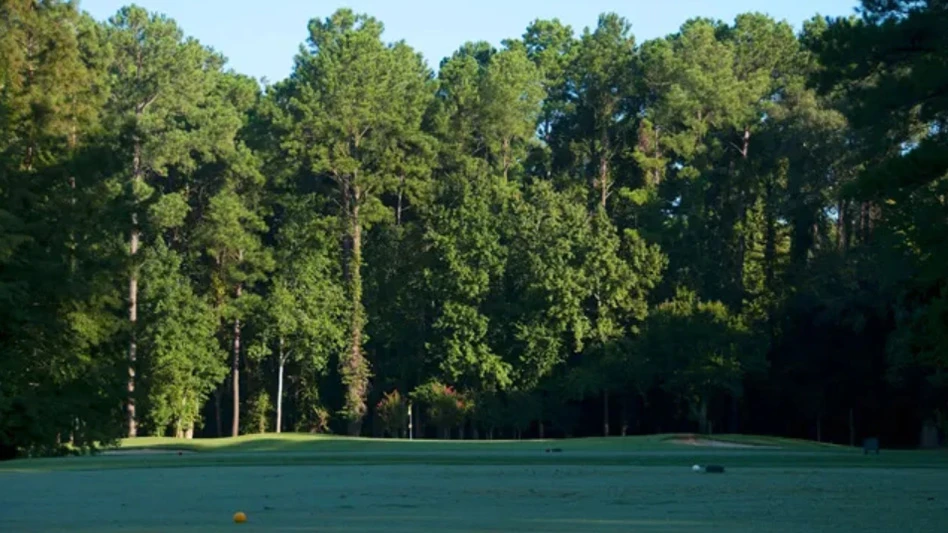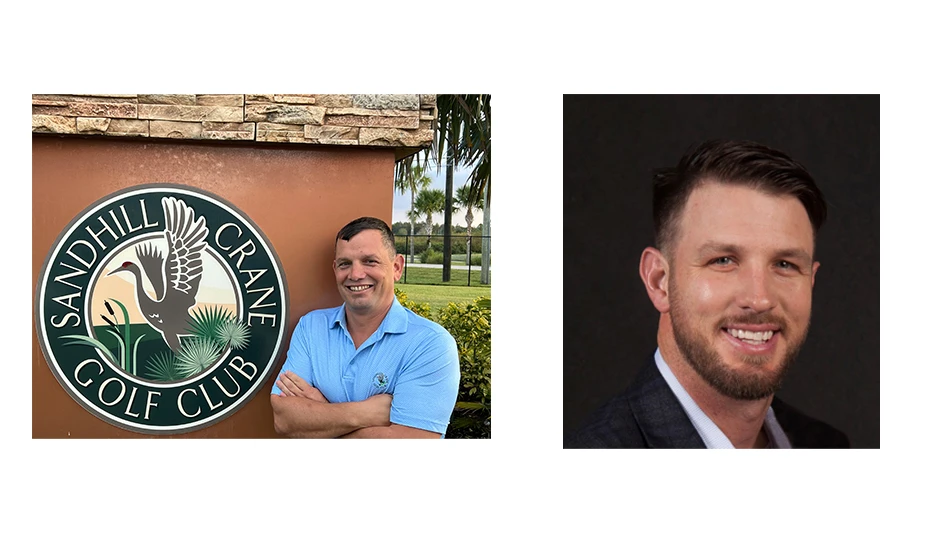How long have you been a member of the GCSAA?
I’ve been a member for 21 years.
|
|
Being a chapter delegate, officer and president of the chapter in Hawaii exposed me to the GCSAA and the importance of belonging and being connected to the national association. That got me involved in GCSAA politics. I don’t know what it was or is that made me want to run for the board of directors, other than my desire to participate at that level and knowing I’m good at working as part of a team and representing our members. My background isn’t unique, but it’s not typical. I felt my moves from Chicago to Hawaii to Oregon gave me insights into superintendents’ careers, and I could help them by being a board member.
When were you elected to the board?
I was appointed in 2001 in Dallas. I ran for the board of directors and came in fourth. There were five of us running for three positions. But the person who was elected secretary treasurer had a year left on his term. Traditionally, the next highest vote-getter gets appointed. That doesn’t happen every time, but in my case, it did. I ran again in 2002 and was elected to a two-year term.
When you were first appointed, did you have a title?
We have nine board members. Four of them are officers: the president, vice president, secretary treasurer and immediate past president. There are five general at-large board members of which I was one.
When did you become an officer?
I was elected secretary treasurer in 2004. After you’re elected secretary treasurer, you run unopposed for vice president. It’s always possible somebody can run off the floor, but an orderly progression is set in our bi-laws. Most of the delegates know when they elect a secretary treasurer that’s the guy they’re electing president in two years.
Should the governance structure change?
There are few people who dislike the way we have our present governance, officers and political board structure. Generally, it’s because of a misunderstanding about the process. When most of the votes are cast by delegates, some chapters appoint a person who casts their votes for them. Some of the chapters might have as many as 360 votes, and some as few as 20. Those delegates who are electing get to know the candidates because they’re the ones empowered with the decision-making, generally from their chapter boards.
If you’re an outsider and aren’t familiar with the process, you wonder how the guys get elected. After you’ve been around, you know the process is rigorous.
Should the presidency be longer to make it more effective?
The way we have it now is you spend four years as an officer, which is better than a two-year term. I’ve gotten to know quite a few guys who are officers of the PGA, and they’re on two-year terms. But some of the guys are owners and are in a different position. When you think about the amount of time spent on the board, especially as president, it’s something that lends itself for a superintendent to do for two years.
|
|
What do you plan to do during your presidency?
It isn’t about trying to accomplish an individual goal. It’s still a nine-member board, and it’s not about what Sean Hoolehan wants to accomplish. It’s what the board has set as our goals to accomplish for a year. So I don’t have an individual goal that I want to accomplish, but I want to support the things the board, and previous boards, have been working toward.
The first would be the implementation of our professional development initiative. It was voted on in 2001, and this summer will be the first period in which we validate the first increment of class A members. So it’s an important time. This is a voluntary standard our members overwhelmingly voted for. It’s a step up professionally. It’s the creation of a credential. When you are a class A member, it means you’ll have to have had a certain amount of continuing education. That’s the most important thing for 2006.
So the president’s role is more of a mouthpiece for what the board has decided to do?
Absolutely. The guys I’ve served with on the board have represented that during the past two years. We have always been a board united. We decide what’s important for the association and work together to achieve it. I’ve never witnessed an individual who has used his position as president to do something he wanted that year.
Each of us brings his own ideas. It would take years on the board to bring an issue you might want to champion to the point where the association is moving on it. That’s because we’re a big association, have many members and have limited resources, so it doesn’t happen overnight.
How beneficial will your presidency be to you down the line?
I’ve benefited from serving on the board as an individual. I’ve learned to listen much better than I did when I first came on. I’ve learned to work as a team professionally and to participate in high-level meetings. It has helped me at Wild Horse. The ideas and things I learned from working at the officer level at the GCSAA or as a member of the board helped us in our operations.
I have no desire to change jobs. I love where I work and have a great employer. I live in one of the most beautiful parts of the world. I’ve never thought about what it would do for my resume, probably because I haven’t updated it in eight years. There’s many easier ways to enhance your career than being on the board of the GCSAA.
What’s the biggest strength of the association?
What’s the biggest weakness of the association?
We’re going to improve our relationship with our 104 chapters. We need to leverage that relationship better. We need to invest back into our chapters. The chapter relations committee endorsed the GCSAA investing back into the chapters. We’re going to look at a pilot program to get the GCSAA out in the field. We’re not just going to send educators or speakers to a meeting, but send people who can go out and help physically and be a part of that area.
Our chapters are our strength. The way they’re made up might not be ideal, but they represent members in every part of the country and that’s a nice position to be in.
What’s the ideal relationship between the GCSAA and its affiliated chapters?
The most important organization to a superintendent is his local chapter. There’s no question about that. That’s where a guy can get the most help. You’re talking about your neighbors and being around people. Their proximity alone gives them the ability to be able to help more.
|
|
Is there tension between the chapters and the GCSAA?
I don’t think so because the chapters are connected to the GCSAA. We have a committee system that includes as many as 300 volunteers. Most of those guys are active chapter members who are serving on a board, were on a board or are connected to their chapter.
But it goes further than that. How do we encase those guys that don’t come to meetings? They come and get our education and their points, but we need to get them more involved. When we engage members by putting them on a committee or get them involved as a delegate or just get them to visit Lawrence, Kan., we have an advocate for the rest of that person’s career, generally.
It’s the same thing with the chapters. When I served as a board member and president of our chapter in Hawaii, I saw guys who hadn’t been active in the chapter for 10 years, but they still felt connected to the chapter because they used to be on the board.
How do we get them more involved? Part of that is being in a busy world. We, as superintendents, think we’re busy, but I’d bet most people who work in almost any career these days tend to have that same feeling. It’s a busy time, and we have many options for what to do with our free time. Serving on a board or being involved in our chapter might not be on the top of the list.
How does the GCSAA support local chapters?
We help them most with education. They ask us to get a speaker for a meeting or request a seminar. They want points attached to a meeting so members know they’ll get credit for it.
Going beyond that, we support the chapters with long-range planning. We encourage all chapters to take advantage of us. We’ll supply them with an individual who’s trained to take them through long-range planning. When these chapters do that, it’s not always a success because it’s almost all volunteer-based. In many cases, they can become more. The chapter becomes more directed in its approach with its future, and by doing that, we also leverage the experience we’ve made with our 104 chapters.
There are similarities among most of our chapters. The Hawaii chapter didn’t have much in common with the Midwest chapter I belonged to when I was in Chicago, but we had similar things. Sharing some of our information about how we succeeded in Hawaii with other guys in other states helped them see how they could develop their statewide chapters. Providing the network thread between the chapters is how we can help them the most.
How has the association’s image changed?
Our image in the golf world has improved. It’s evident in our salary surveys. The pay is better, and when we ask our members how they feel about their career moves, most of them feel positive about it.
Sometimes the GCSAA hasn’t communicated to the average member the importance of his membership. We have come to the conclusion that as the facility goes, so goes our members. If the golf course is doing well, our members are doing well, generally. We have to focus on the facility and the success of the facility for our members. There needs to be a tie to what’s important to the facility, and we have to communicate that and help our members so they can help and they can attend more meetings.
The network of our friends and peers is critical sometimes, especially when you’re having a tough year. I don’t know if we’ve done a good of a job of communicating to facilities to help members justify their memberships and their attendance at seminars and at meetings.
Do you foresee significant growth during the next 10 years?
An organization that doesn’t grow is unhealthy. We represent 55 percent to 60 percent of facilities in the country. That leaves a lot of room. We haven’t figured out what we have to do to get at those facilities, but we have a much better chance of getting a new member of the GCSAA if he’s a member of a chapter. Any growth we have is going to require the growth at the chapter level.
|
|
A few years ago, 300 new golf courses were opening a year, and we were enjoying the membership that went with that. That’s not going to happen in this environment, but there still are many golf courses we would like to penetrate. We recognize the only way we’re going to penetrate them is showing them the value of chapter and GCSAA membership to their facility.
How does membership work between the GCSAA and the chapters?
We have shared members. Chapters members are our members when it comes to our class A and superintendent members. Chapter boards have to consist of GCSAA members for them to be a chapter. You have membership, local dues and national dues to pay to become a member.
In my career, I’ve paid my own dues, and it was important. I was fortunate that I was trained by professional golf course superintendents. Not everybody comes through that, so they don’t have an understanding of the importance of what their membership is. We need to have entryways for these clubs. There are small, affordable golf clubs, maybe nine-holers, par 3s, executives, whatever, around the country that work on shoestring budgets, but it’s still golf, it’s where people enter the game, and we have to find a way to penetrate those areas better. It’s not easy for the chapters because they say these guys are so busy they don’t want to come to meetings. They come and ask for help when they need it.
We have to reach out and get more of these affordable, accessible facilities participating in chapters and the GCSAA.
So there’s a pretty good mix of people on the board?
There used to be this feeling that the board consisted of these elite superintendents. I don’t want to say we’re not because we’re progressive and intelligent guys. But I also recognize the majority of us are at public facilities, and that wasn’t always true. There are only three members of the board right now who are at private facilities. There used to be a time when there was one guy from a public facility. There are a wide variety of superintendent and facility types throughout the country. The delegates figure that out for themselves. There’s none of this that says we have to have some guys from out West. It just happens. There’s no guarantee you’ll get elected when you run. There have been good people who’ve run and haven’t made it. It tends to work out.
Mark Kuhns (Baltusrol Golf Club in Springfield, N.J.), who’s at the pinnacle of our profession and serves on our board, is a candidate for secretary treasurer this year. He started out at a low-budget club. We’ve all probably experienced those levels at some time in our careers. You don’t just start out at the top. Those experiences stay with you throughout your career. Even a guy like Mark knows what it’s like to be at a limited facility, and being able to have that connection with our members is important. GCN
Sean Hoolehan can be reached at shoolehan@wildhorseresort.com.

Explore the January 2006 Issue
Check out more from this issue and find your next story to read.
Latest from Golf Course Industry
- GCSAA’s Rounds 4 Research auction begins
- Quali-Pro hires new technical services manager
- KIOTI Tractor boosts sales leadership, introduces compact loaders system
- Envu adds three new sales managers
- Ahead of the sustainability curve
- From the publisher’s pen: Watery dilemma
- The Aquatrols Company hires marketing manager
- Renovating Bredemus in West Texas









